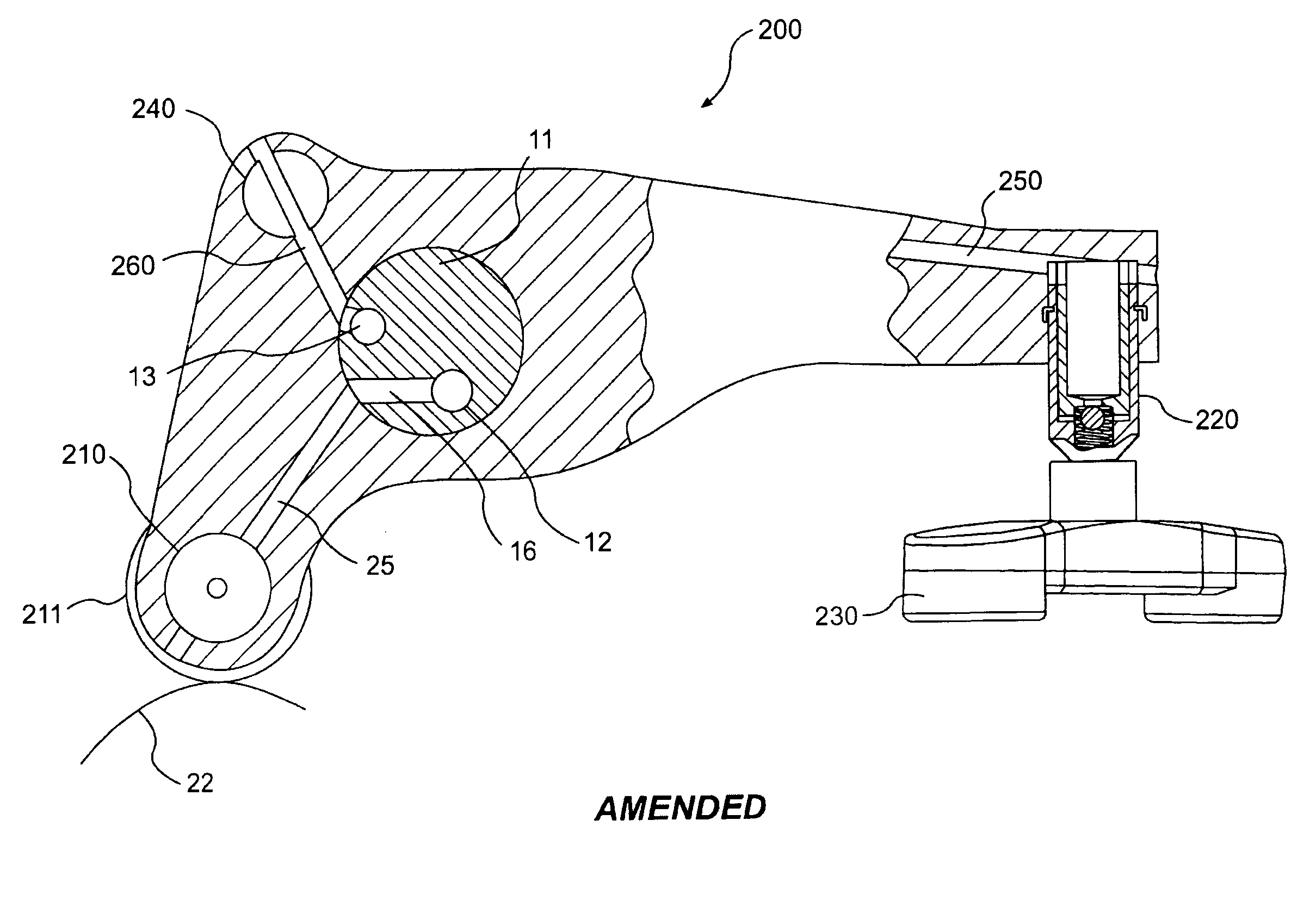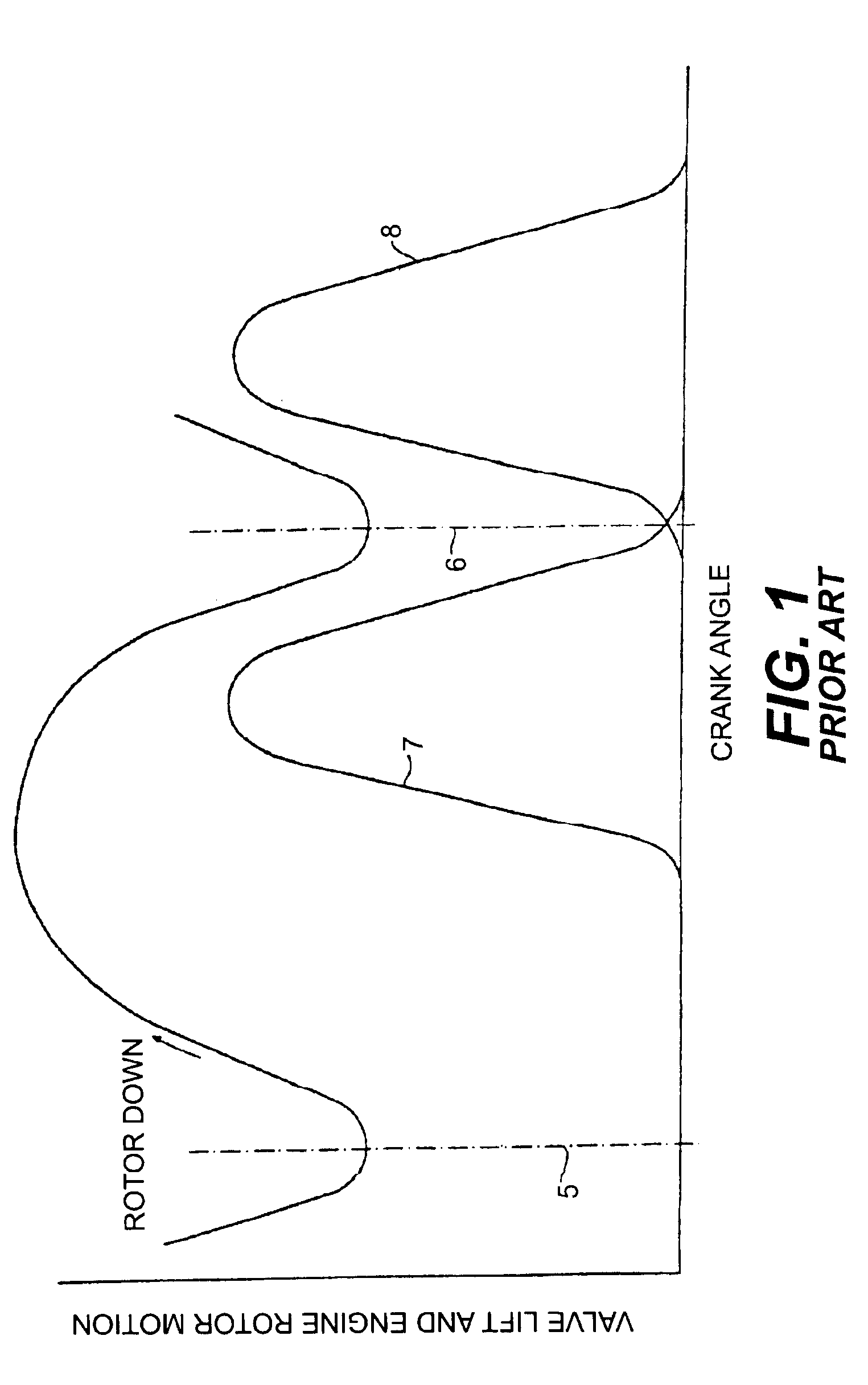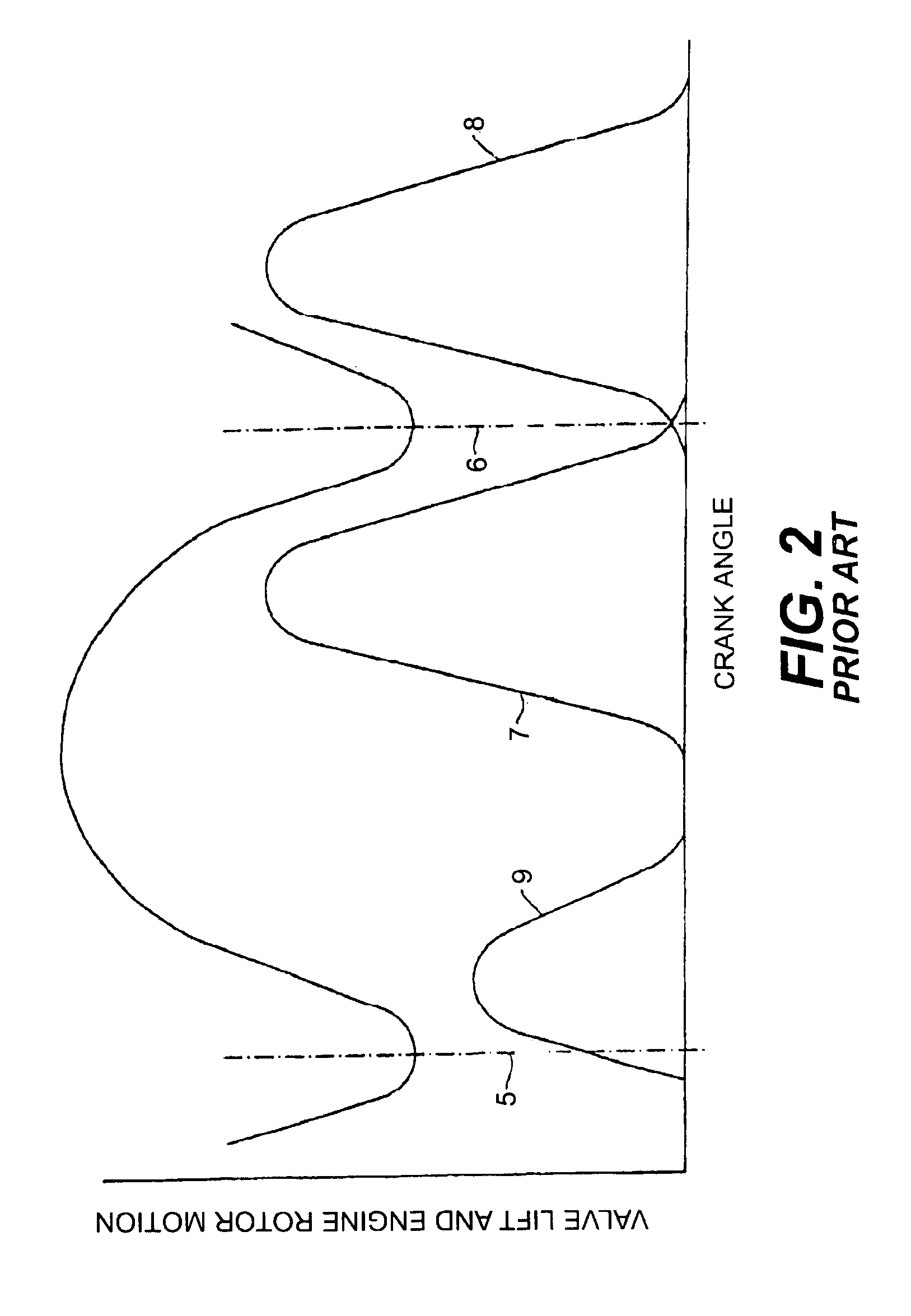Multi-cycle, engine braking with positive power valve actuation control system and process for using the same
a technology of positive power valve actuation and control system, which is applied in the direction of machine/engine, charge feed system, valve arrangement, etc., can solve the problems of braking affecting the performance of engine braking, other internal combustion engine limitations, and inherent limitations of conventional single-cycle engine braking systems, so as to achieve reliable and robust performance, greater control and reliability
- Summary
- Abstract
- Description
- Claims
- Application Information
AI Technical Summary
Benefits of technology
Problems solved by technology
Method used
Image
Examples
Embodiment Construction
[0087]Reference will now be made in detail to a preferred embodiment of the present invention, an example of which is illustrated in the accompanying drawings. FIG. 4 and FIG. 18 illustrate a schematic view of the valve side of dual cam shafta rocker arm arrangement and dedicated brake cam rocker for a compression release-type engine brake assembly 10 according to the present invention. The compression release engine brake components and the valve actuation components are located in rocker arms 100, 200, and 300.
[0088]The rocker arms 100, 200, and 300 are spaced along a common rocker shaft 11 having at least one passage. The common rocker shaft 11 has a passage 12 through which a supply of engine oil flows therethrough, as shown in FIG. 56. The common rocker shaft 11 also has a supply passage 13 which supplies hydraulic fluid to an exhaust rocker arm 100 and an intake rocker arm 200. A valve 30 is located on the common rocker shaft 11, as shown in FIG. 56. The valve 30 is preferably...
PUM
 Login to View More
Login to View More Abstract
Description
Claims
Application Information
 Login to View More
Login to View More - R&D
- Intellectual Property
- Life Sciences
- Materials
- Tech Scout
- Unparalleled Data Quality
- Higher Quality Content
- 60% Fewer Hallucinations
Browse by: Latest US Patents, China's latest patents, Technical Efficacy Thesaurus, Application Domain, Technology Topic, Popular Technical Reports.
© 2025 PatSnap. All rights reserved.Legal|Privacy policy|Modern Slavery Act Transparency Statement|Sitemap|About US| Contact US: help@patsnap.com



